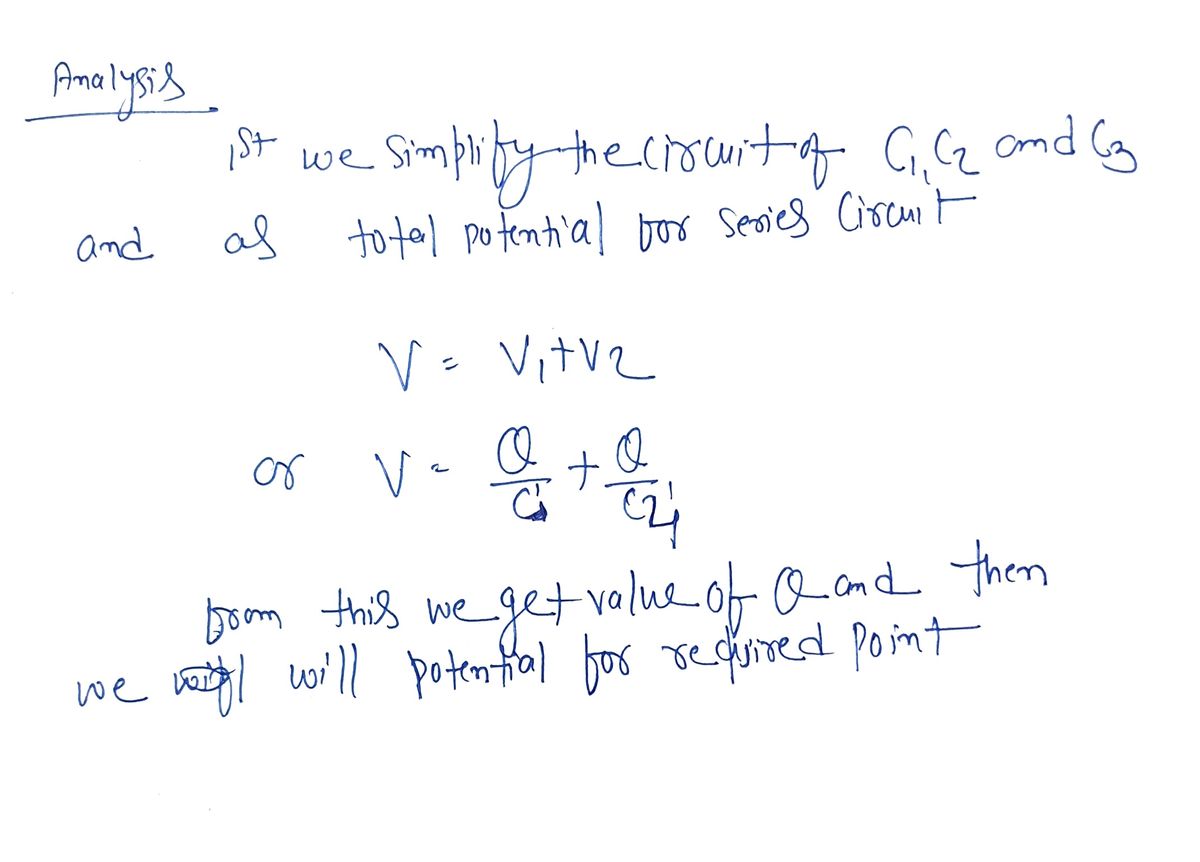In (Figure 1), each capacitor has C = 4.90 µF and Vab = 34.0 V. Part H Calculate the potential difference across capacitor C4. Express your answer in volts. ? V4 = V Figure 1 of 1 C, C2 Part I Calculate the potential difference between points a and d. Express your answer in volts. ? C4 Vad = V
In (Figure 1), each capacitor has C = 4.90 µF and Vab = 34.0 V. Part H Calculate the potential difference across capacitor C4. Express your answer in volts. ? V4 = V Figure 1 of 1 C, C2 Part I Calculate the potential difference between points a and d. Express your answer in volts. ? C4 Vad = V
Related questions
Question
![### Educational Content on Capacitors
**Figure Description:**
In the given circuit diagram, there are four capacitors labeled \( C_1 \), \( C_2 \), \( C_3 \), and \( C_4 \). Each capacitor has a capacitance of \( C = 4.90 \, \mu\text{F} \). The voltage between points \( a \) and \( b \), \( V_{ab} \), is \( 34.0 \, \text{V} \).
**Circuit Layout:**
- Capacitors \( C_1 \) and \( C_2 \) are connected in parallel.
- Capacitor \( C_3 \) is connected in series with \( C_1 \) and \( C_2 \).
- Capacitor \( C_4 \) is in parallel with the series combination of \( C_3 \).
**Tasks:**
**Part H:**
- **Objective:** Calculate the potential difference across capacitor \( C_4 \).
- **Answer Format:** Express your answer in volts (\(\text{V}\)).
- **Expression Input:** \( V_4 = \) [Input Field] V
**Part I:**
- **Objective:** Calculate the potential difference between points \( a \) and \( d \).
- **Answer Format:** Express your answer in volts (\(\text{V}\)).
- **Expression Input:** \( V_{ad} = \) [Input Field] V
This content is meant to help students understand how to analyze and calculate voltages in capacitor circuits, focusing on series and parallel configurations.](/v2/_next/image?url=https%3A%2F%2Fcontent.bartleby.com%2Fqna-images%2Fquestion%2F42af088d-ce23-4d3f-aacd-d06d0f349453%2F505ad063-cca4-4539-8073-e764f2eafa58%2F1mc9ac9_processed.jpeg&w=3840&q=75)
Transcribed Image Text:### Educational Content on Capacitors
**Figure Description:**
In the given circuit diagram, there are four capacitors labeled \( C_1 \), \( C_2 \), \( C_3 \), and \( C_4 \). Each capacitor has a capacitance of \( C = 4.90 \, \mu\text{F} \). The voltage between points \( a \) and \( b \), \( V_{ab} \), is \( 34.0 \, \text{V} \).
**Circuit Layout:**
- Capacitors \( C_1 \) and \( C_2 \) are connected in parallel.
- Capacitor \( C_3 \) is connected in series with \( C_1 \) and \( C_2 \).
- Capacitor \( C_4 \) is in parallel with the series combination of \( C_3 \).
**Tasks:**
**Part H:**
- **Objective:** Calculate the potential difference across capacitor \( C_4 \).
- **Answer Format:** Express your answer in volts (\(\text{V}\)).
- **Expression Input:** \( V_4 = \) [Input Field] V
**Part I:**
- **Objective:** Calculate the potential difference between points \( a \) and \( d \).
- **Answer Format:** Express your answer in volts (\(\text{V}\)).
- **Expression Input:** \( V_{ad} = \) [Input Field] V
This content is meant to help students understand how to analyze and calculate voltages in capacitor circuits, focusing on series and parallel configurations.
Expert Solution
Step 1

Step by step
Solved in 2 steps with 2 images
